Tutorial at DAFx24
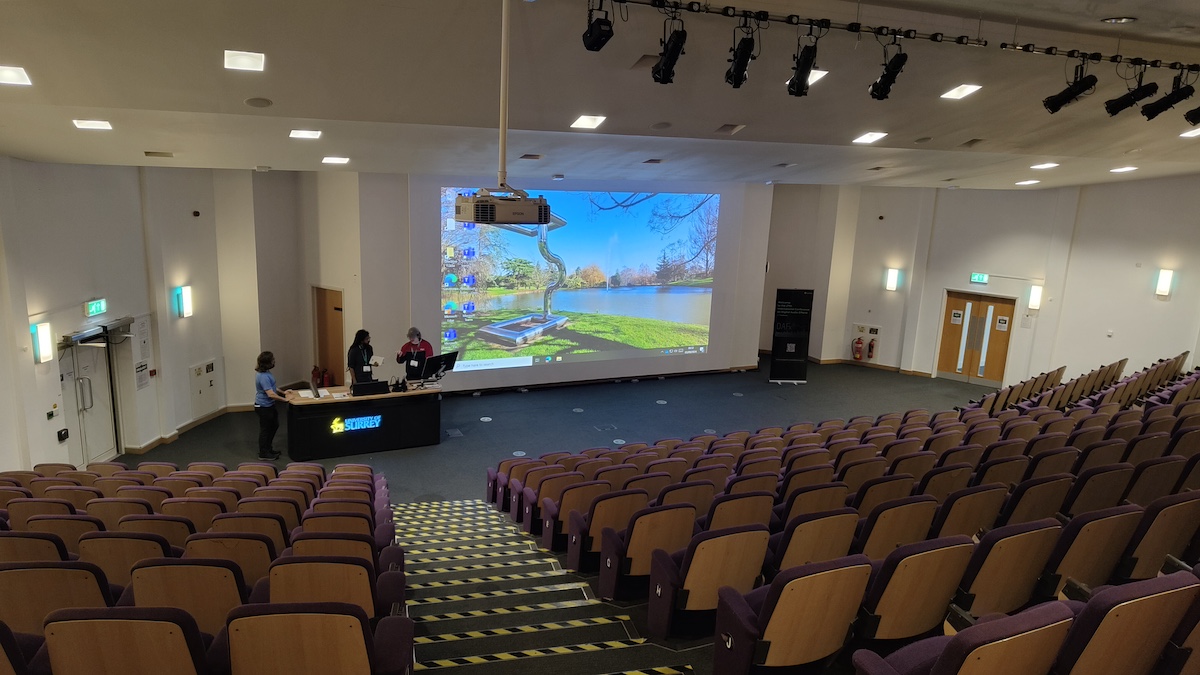
This is a summary of the guest tutorial that I gave at DAFx24, University of Surrey, UK.
This was the brief outlined by Randall Ali, who curated the tutorials:
DAFx is a community of people from academia and industry (150 people or so) that meet annually to discuss/present work related to digital audio signal processing for music and speech, design of digital audio effects, sound art, acoustics, and related applications. On the first day of the conference, we invite a few people from academia/industry to give a tutorial for about 2 hours, where particular concepts and/or techniques are taught from the ground up, often in a workshop style, but we leave that up to the speaker to decide how they want to do it.
Given that many in the community design audio effects and come up with algorithms to synthesize musical instruments, etc., one question that pops up a lot is how should musicians interact with these digital instruments/effects or what sorts of accomodations should one make when designing virtual instruments/effects so that it can be better controlled by the musician? With that in mind, we thought it would be great to have you give a tutorial in the area of real-time interactive systems, discussing some of the foundations and more recent technologies facilitiating this and how people in the community can use them in their practice, and all from your point of view of collaborative, egalitarian, and sustainable spaces. Like I mentioned, it doesn’t just have to be talking from slides, but you can make it hands-on as well, encouraging the participants to actively engage and learn the material as is typically done in tutorials.
The title and abstract of the tutorial was:
Tutorial #1 – Design strategies and techniques to better support collaborative, egalitarian and sustainable musical interfaces
A common challenge in the community of designing audio effects and algorithms to synthesise musical instruments is what are the design considerations to accommodate interaction experiences relevant to musicians, particularly among a diverse community of practitioners. This hands-on tutorial will cover some theoretical and practical foundations for designing interfaces for digital sound instruments and effects looking at how best to support collaborative, egalitarian and sustainable spaces.
The tutorial had 3 parts:
- Part 1 - Interface design
- Part 2 - Mappings & user experience
- Part 3 - Data / References
Part 1: Interface design
In Part 1, we discussed cultural aspects and design decisions around NIME designs. We looked at 10 DIY musical instruments created by women builders analysed in our paper Jawad, K., & Xambó Sedó, A. (2024) “Feminist HCI and narratives of design semantics in DIY music hardware”, Frontiers in Communication, 8, 1345124, which uses the Feminist HCI framework from Bardzell, S. (2010) “Feminist HCI: taking stock and outlining an agenda for design”, Proceedings of the SIGCHI Conference on Human Factors in Computing Systems 1301–1310.
The ten instruments analysed in Jawad & Xambó (2024) are:
- Bell Controller by Stephanie Cheng Smith (2015)
- Electronic_Khipu_ by Patricia Cadavid (2020)
- The Exchange by Lori Napoleon (2012)
- Mermy by Shan Ni (2020)
- Prism Bell by Lia Mice (2019)
- GramFX by Jassie Rios (2018)
- Spring Spyre by Laetitia Sonami (2013)
- Laser Koto by Miya Masaoka (2007)
- SpaceTime Helix by Michela Pelusio (2012)
- Soft Revolvers by Myriam Bleau (2014)
By prompting responses to 10 illustrations of the instruments without any reference and then 10 words of the names of the instruments without any reference, we navigated through the research question of How fabulations of design semantics, through the lens of feminist HCI principles, can reshape our understanding of gender bias in object design within the realm of DIY musical instruments constructed by women builders?.
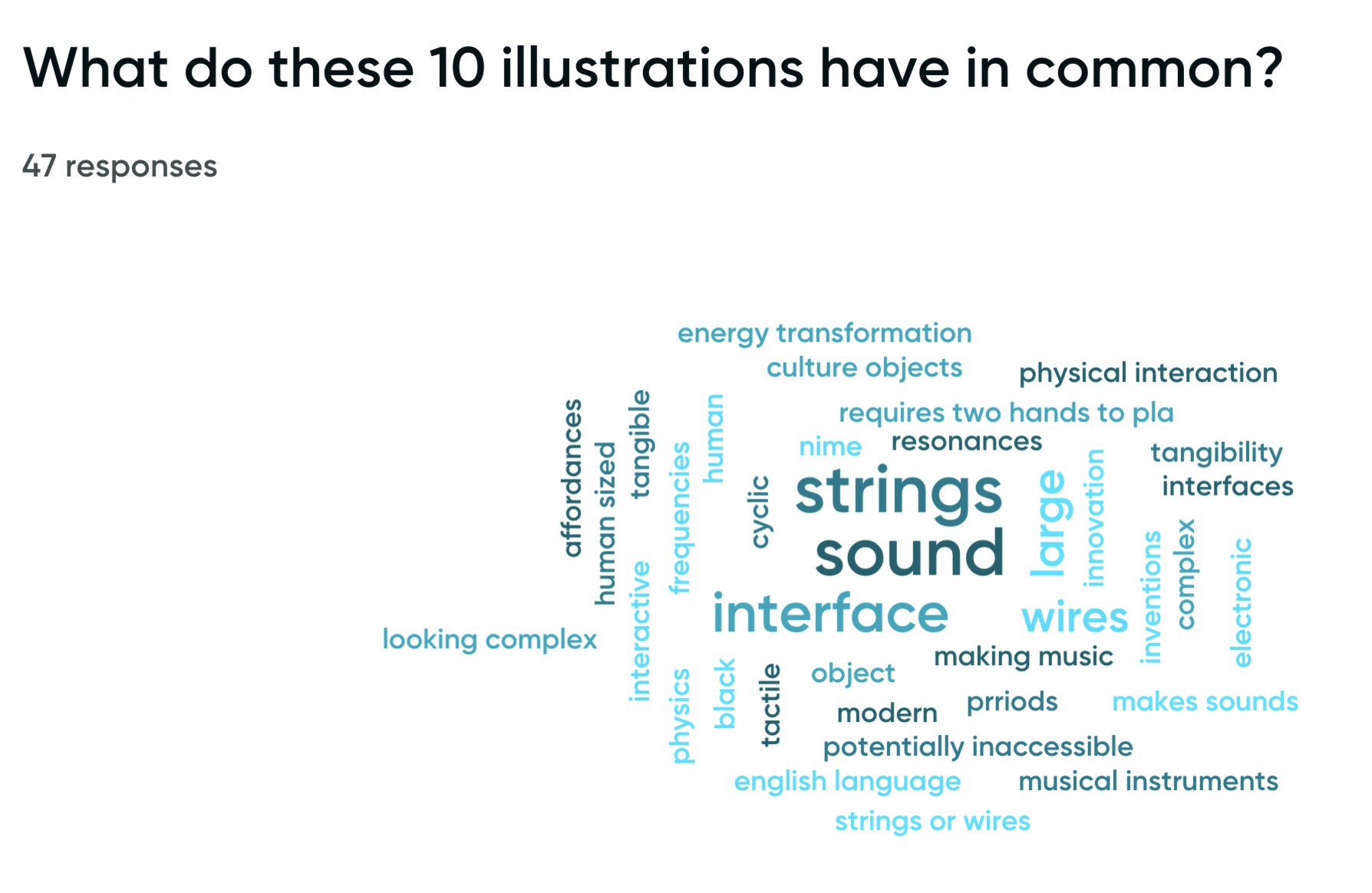
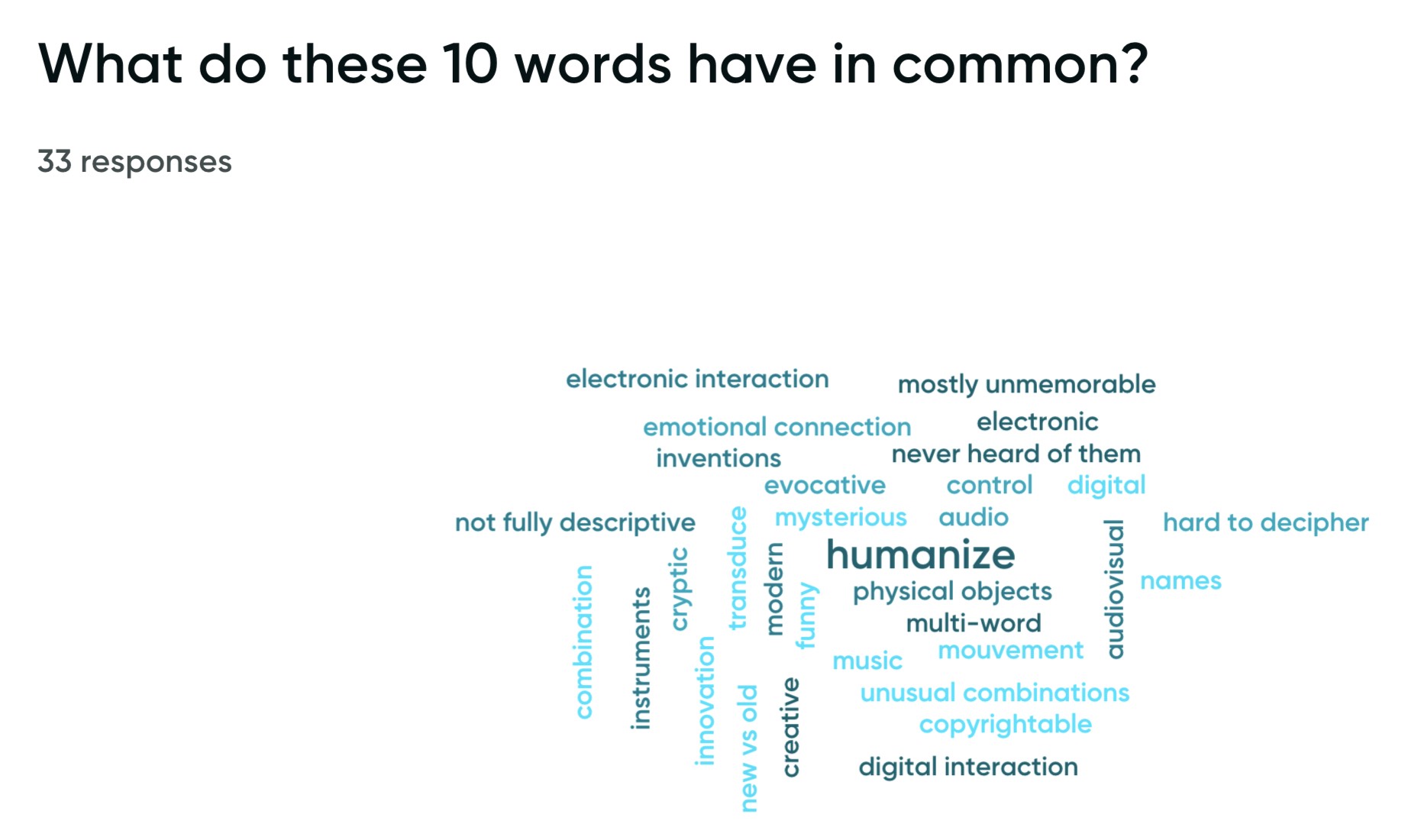
This led to talk about the following qualities of Feminist HCI:
- Ecology/Materiality - We read this quality as emphasising the interconnectedness of technology and the environment. Especially, what material solution has been chosen for the physical components and hardware of the instrument.
This part concluded with the following exercise:
Imagine/speculate a (re-)design for a musical interface focusing on shape, colour, and material/texture
Below you can find two examples proposed by the workshop participants: an example of a musical interface based on strings and another example based on a string on a wooden corpus.
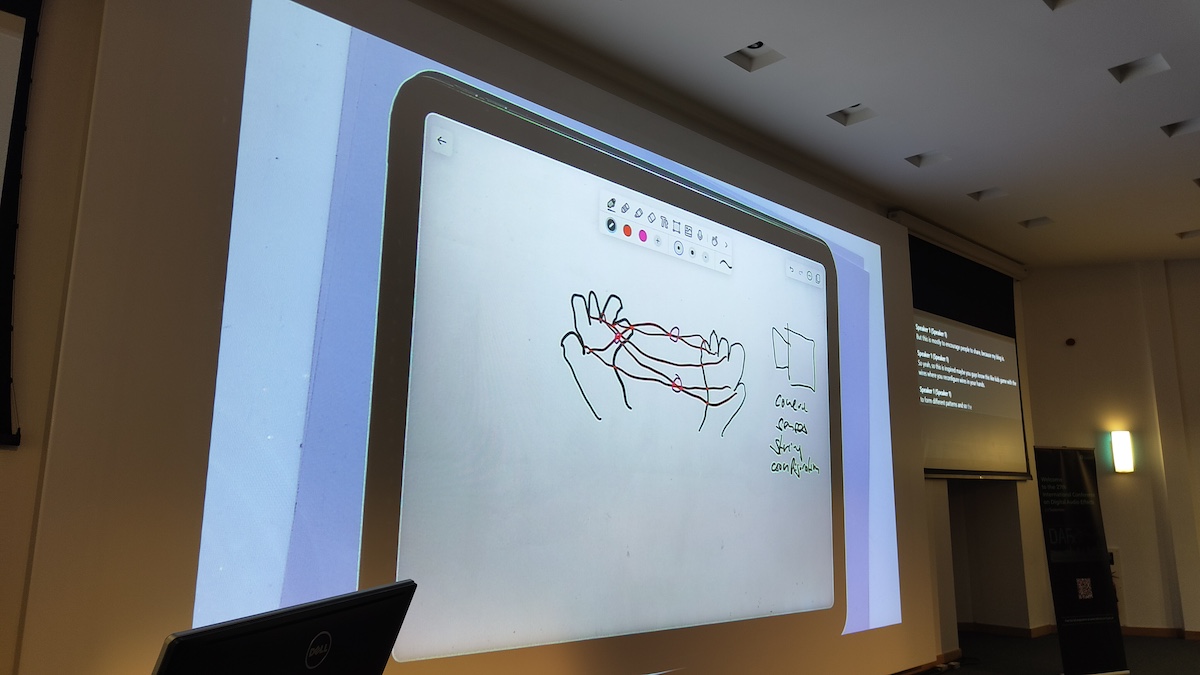
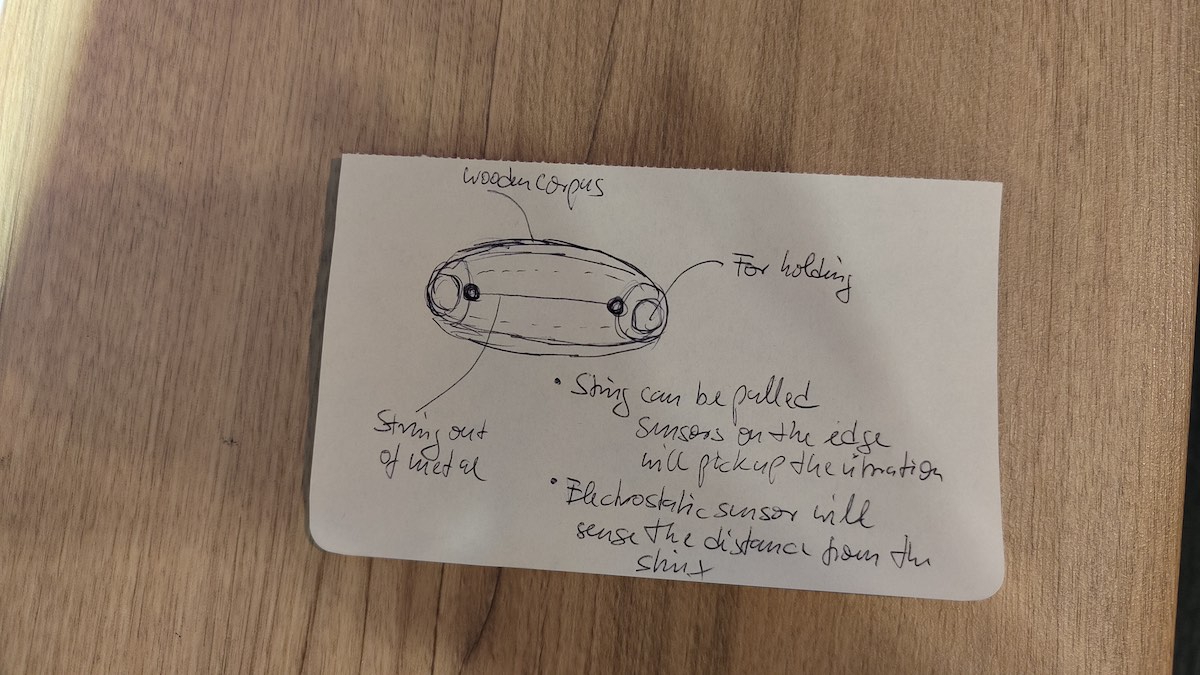
Part 2: Mappings & user experience
In Part 2, we discussed mappings and user experience (ways of involving users e.g. participatory design etc). This led to talk about two other qualities outlined in Feminist HCI:
- Pluralism - It is the quality of pluralism as emphasizing and recognizing diverse perspectives, experiences, and voices. It encourages the design of instruments representing the multiplicity of identities, cultures, and backgrounds. Each instrument has a unique approach.
- Embodiment - The approach undertaken considers quality in how the instruments can support and enhance embodied experiences, taking into account diverse abilities, gender expressions, and cultural practices.
This part concluded with the following exercise:
Propose a mapping strategy from action to sound synthesis using your previous drawing.
Below you can find some of the responses.
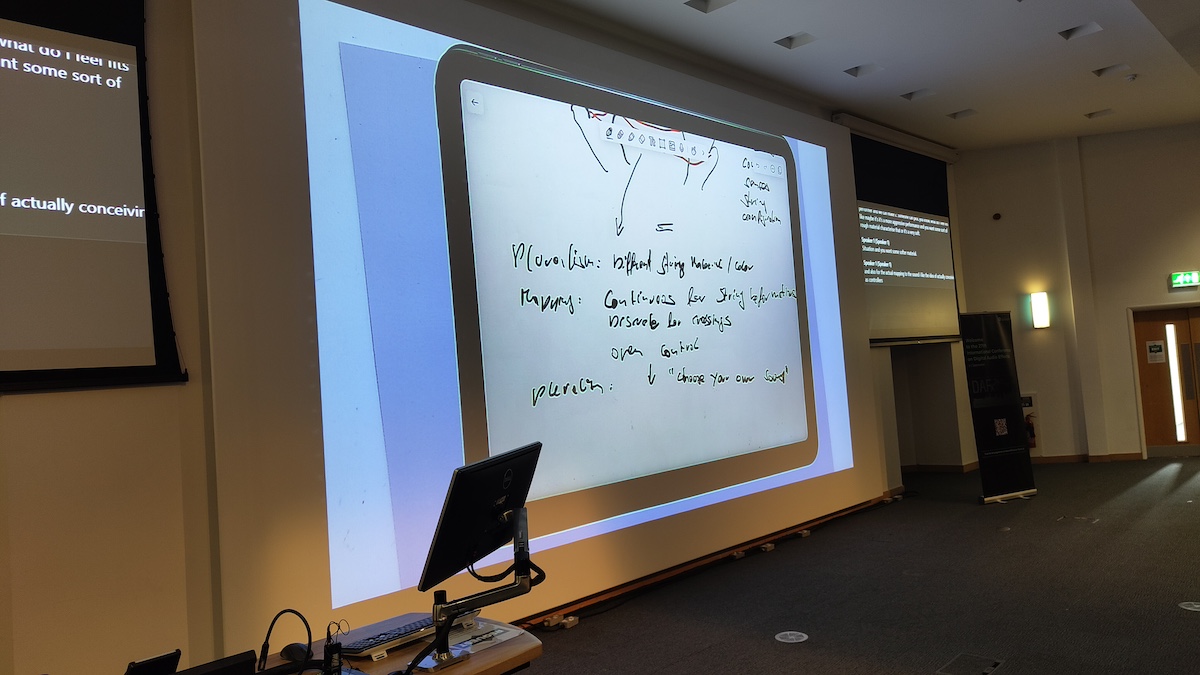
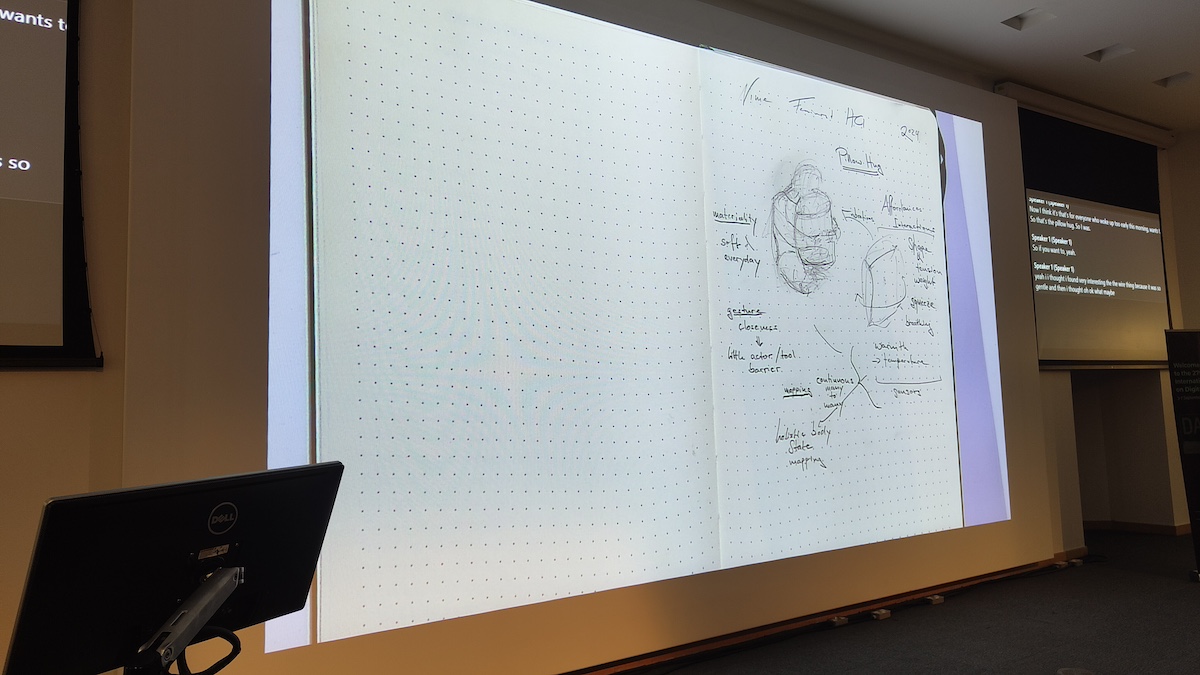
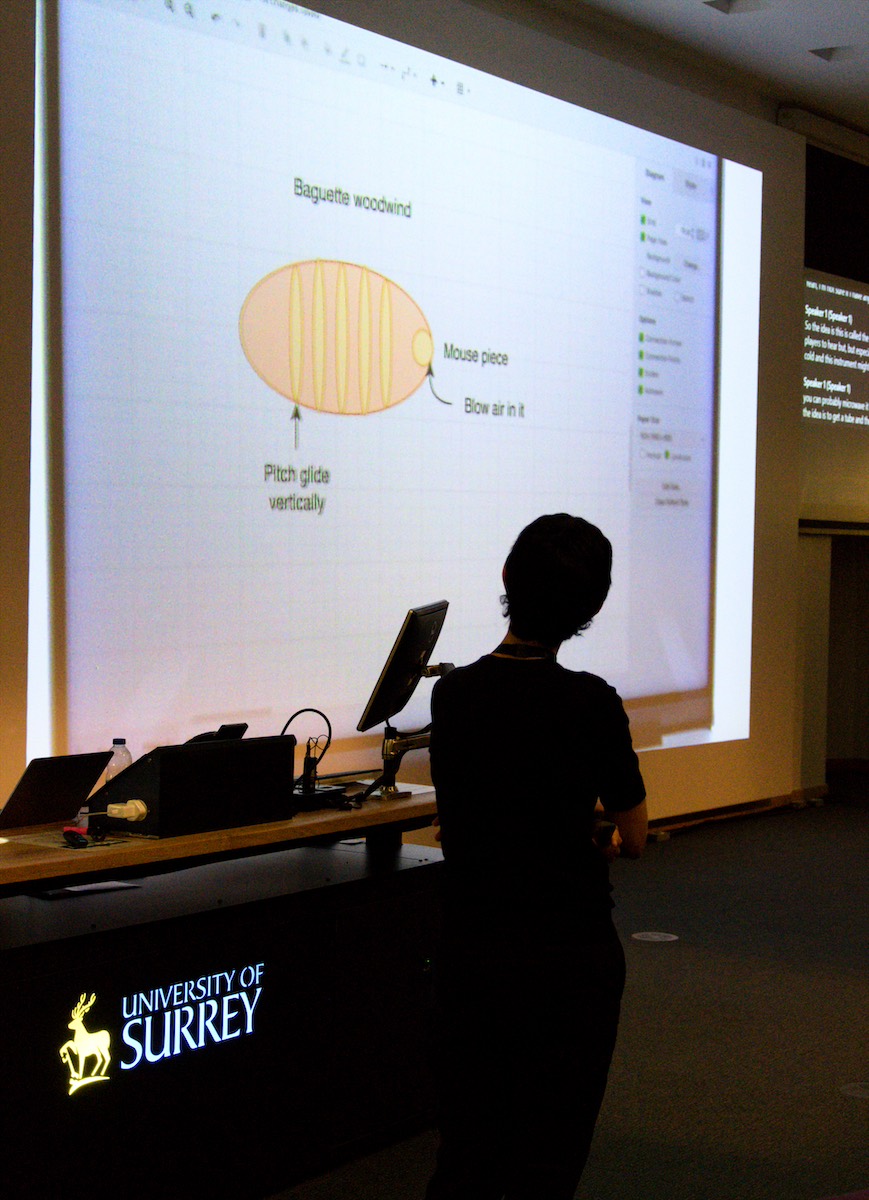
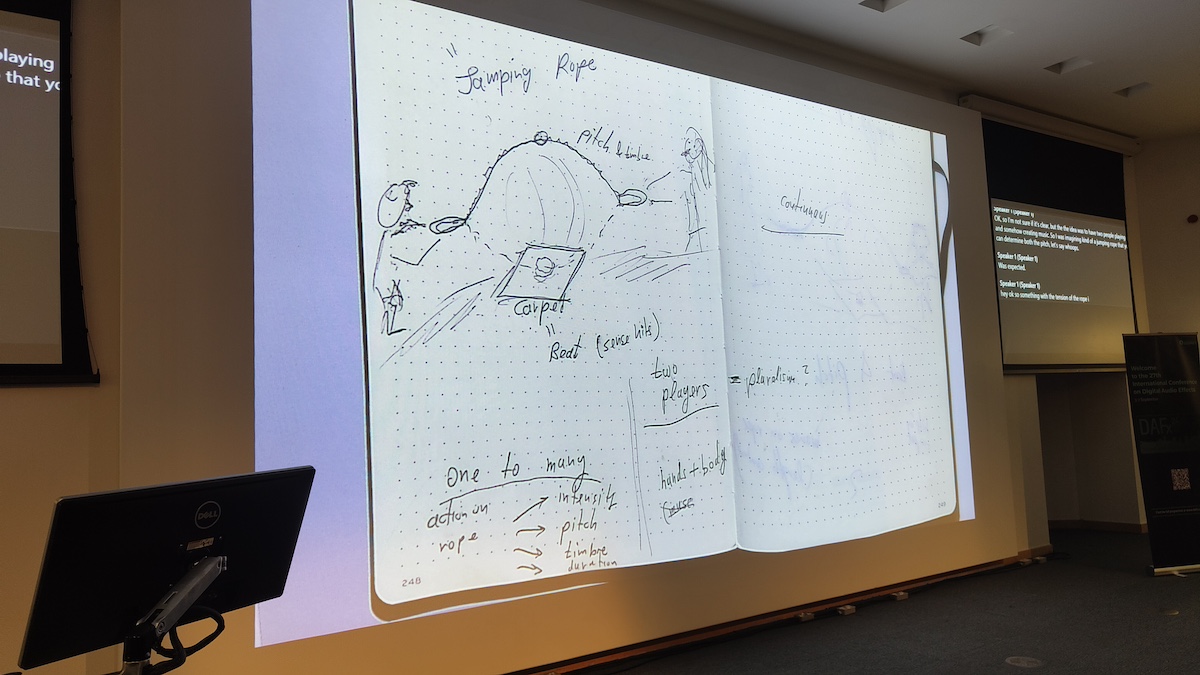
Part 3: Data / References
In Part 3, we discussed the relevance of what datasets with use and what references we cite by looking at data bias, bias and discrimination in AI systems, and citation practices. The discussion centred around the book D’Ignazio, C., & Klein, L. F. (2023). Data Feminism, MIT Press. Here, we had an open discussion about critically evaluating the datasets we use to identify potential biases and discuss the implications of these biases in data analysis and decision-making.
Resources
Acknowledgements
Thanks to Randi Ali, Enzo De Sena, and the DAFx24 committee for the invitation and the challenge. Thank you to the workshop attendees for their participation in the discussion, tag clouds and sketches. Thanks also to Gerard Roma for his constant support and help. I enjoyed the conference! The diversity offered in the tutorials and keynotes was outstanding.